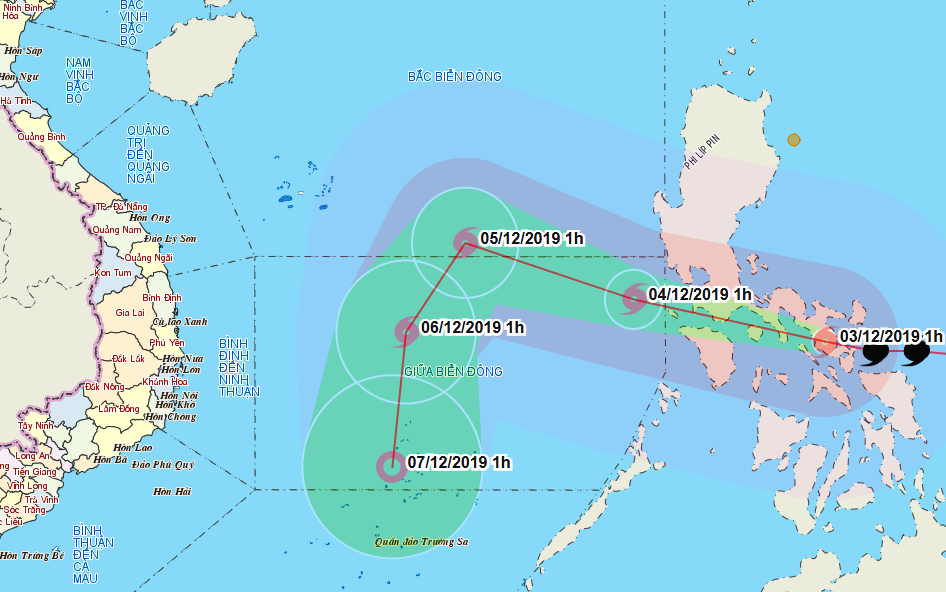Cold snap engulfing central Viet Nam, typhoon Kammuri hammering the Philippines
The Mid-Central Region Centre for Hydro-meteorological Forecasting on Tuesday said a cold spell is hitting parts of the south-central region of Viet Nam, including Da Nang.
 |
| The expected path of typhoon Kammuri |
Due to the effects of the cold front, Da Nang, and elsewhere in the mid-central region from Quang Binh to Thua Thien Hue provinces, are seeing scattered to moderate showers, and low temperatures.
In particular, the lowest temperatures recorded in mountainous areas from Quang Binh to Thua Thien Hue provinces range from 14 to 16 degree Celsius. Meanwhile, the lowest temperatures for coastal localities from Da Nang to Quang Ngai Province are hovering between 19 and 21 degree Celsius.
Also, winds at level 3/4 are raging in the mainland of the mid-central localities, whilst heavy rough sea and winds level 5 are forecast off the coast of these central localities.
The forecasters also said that typhoon Kammuri, known locally as Tisoy, made landfall the central Philippines this early morning. The storm clocked maximum sustained winds near 215 kilometers per hour.
At around 7.00 am today, 3 December, the typhoon was located at latitude 13°2’N and longitude 122°6’E, in the central Philippines, with maximum wind speeds near its center reaching 135 - 165kph (level 14), gusting at level 17.
Over the next 24 hours, Kammuri is predicted to move mainly west-northwest at a speed of 15-20 km per hour, and it is likely to enter the East Sea.
At around 7.00 am tomorrow, 4 December, the storm’s position should be at latitude 14°4’N and longitude 118°2’E, about 550km northeast of the Song Tu Tay Island, part of the Truong Sa (Spratly) archipelago in the East Sea.
It is forecast that Kammuri will continue moving in a west-northwest direction, and it is likely to weaken into a tropical depression and low pressure zone on 6 December after entering the East Sea.
By HOANG HIEP - Translated by MAI DUNG